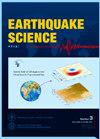The northeastern part of the Tibetan Plateau is a region where different tectonic blocks collide and intersect, and large earthquakes are frequent. Global Navigation Satellite System (GNSS) observations show that tectonic deformation in this region is strong and manifests as non-uniform deformation associated with tectonic features. S-wave splitting studies of near-field seismic data show that seismic anisotropy parameters can also reveal the upper crustal medium deformation beneath the reporting station. In this paper, we summarize the surface deformation from GNSS observations and crustal deformation from seismic anisotropy data in the northeastern Tibetan Plateau. By comparing the principal compressive strain direction with the fast S-wave polarization direction of near-field S-wave splitting, we analyzed deformation and its differences in surface and upper crustal media in the northeastern Tibetan Plateau and adjacent areas. The principal compressive strain direction derived from GNSS is generally consistent with the polarization direction of fast S-waves, but there are also local tectonic regions with large differences between them, which reflect the different deformation mechanisms of regional upper crustal media. The combination of GNSS and seismic anisotropy data can reveal the depth variation characteristics of crustal deformation and deepen understanding of three-dimensional crustal deformation and the deep dynamical mechanisms underlying it. it.


